
 |
|
|
Corn
Volume 58 Number 15 Date 08/15/2013 CORN ROOTWORM - The annual beetle survey continued during the last reporting period. Preliminary results from the southern crop districts show a very slight decrease in counts as compared to 2012. Although individual fields in Columbia, Grant, Lafayette, Rock and Walworth counties contained very high adult populations in the range of 3.0 or more beetles per plant, most sites had non-economic counts of less than 0.5 per plant. The average is 0.6 per plant in the southwest district, 0.8 per plant in the south-central district and 0.8 per plant in the southeast district. A count of 0.75 or more beetles per plant signals the potential for severe root feeding damage to non-Bt, continuous corn next season. Economic populations were found in 21 of the 101 fields surveyed as of August 14. CORN EARWORM - The significant migration that began last week has accelerated at some sites. Large flights of 85-260 moths were registered in Dane and Fond du Lac counties and treatments are underway. Trap counts for the period of August 8-14 were: Chippewa Falls 2, Coon Valley 0, Cottage Grove N 18, Green Lake 51, Janesville 1, Marshfield 7, Mazomanie 0, Manitowoc 1, McFarland 260, Ripon 85, Sun Prairie N 260, Sun Prairie W 63, and Watertown 31. EUROPEAN CORN BORER - Second generation larvae are appearing in the ear tips of corn. Surveyed fields in the southwest and west-central counties had 3-25% of the ears infested with 1-2 larvae, which varied from newly hatched to third instar. The treatment window for second generation larvae remains open for approximately one more week across the southern half of the state. Controls directed against the summer generation must be applied during the period after egg hatch and before larvae bore into the stalks, prior to the accumulation of 2,100 degree days. WESTERN BEAN CUTWORM - Moth collections have declined to low levels as the annual flight subsides. Preliminary results of the annual trapping survey show a considerable decrease in the state moth count, from 3,290 last season to 584 as of August 15. Cumulative counts for the 116 pheromone traps distributed throughout Wisconsin are shown in the map below. The highest individual count for the 10-week monitoring period was only 60 moths near Montello in Marquette County. CORN LEAF APHID - Light colonies are common on corn in the southern and central counties where approximately 5-20% of the plants are infested with 20-45 aphids per plant. Densities of 50 or more aphids per plant on 50% of the plants may interfere with pollination. -- Krista Hamilton, DATCP Entomologist 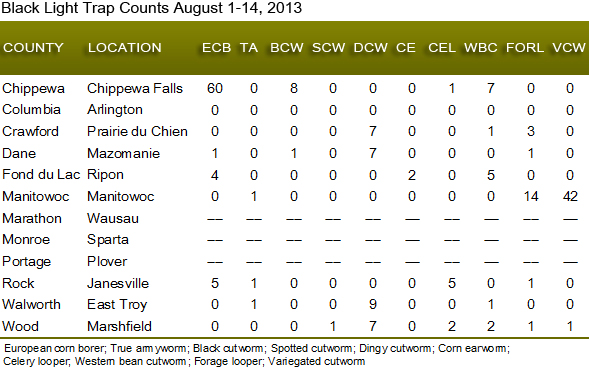

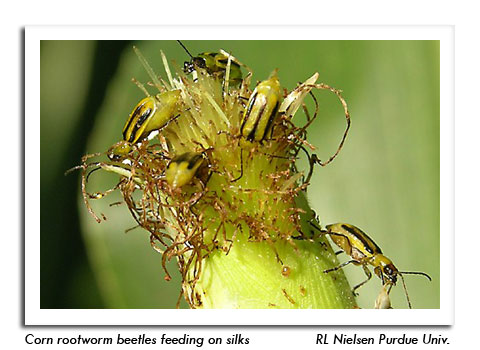
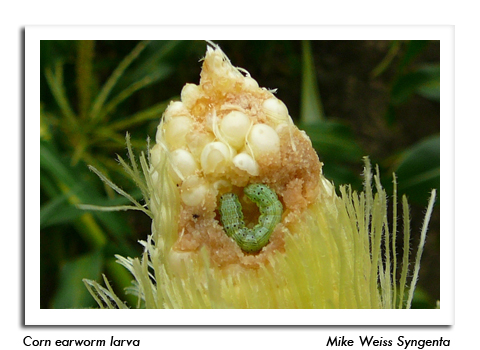
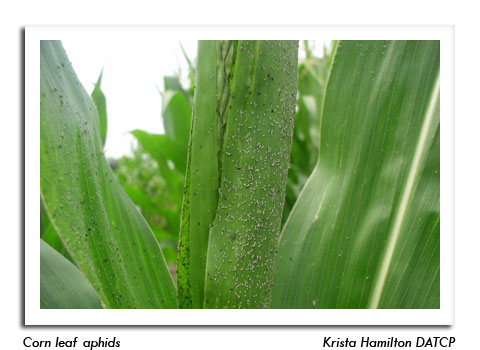
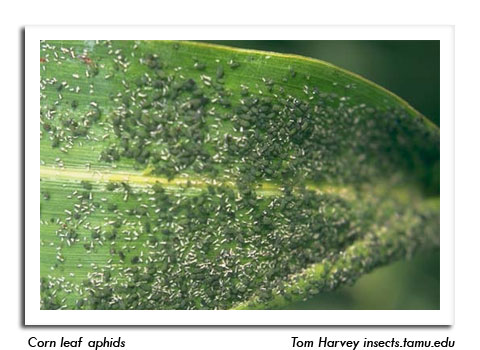
|
|
|